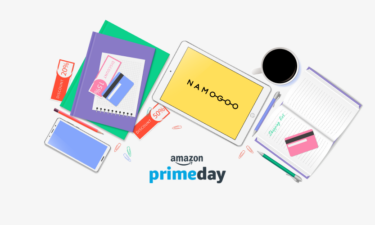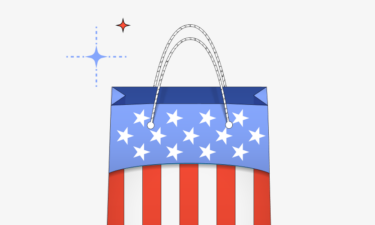Consumer purchasing habits are changing[*] drastically, and retailers are caught in between. Just as orders placed months ago started coming in, when demand was higher, spending slowed down due to rising inflation. Brands and retailers are now scrambling to clear excess inventory as opposed to securing it.
The slow movement of stock not only results in a loss of revenue but also extra storage costs. With the peak shopping season just around the corner, retailers are on tight timelines to make space for holiday inventory.
As consumers choose to spend less on discretionary items[*], how can affected brands and retailers cost-effectively get rid of excess products? In this article, we’ll showcase 16 tactics for selling overstock and seasonal inventory.
How the Ever-Changing Retail and Consumer Landscape Impacts Inventory
While the response to strong inflation and the bleak economic outlook varies from country to country, in the US and UK, specifically, consumer confidence is dwindling. Salesforce[*] estimated that the recent economic challenges put $1.4 trillion in margins at stake for global retailers.
Deloitte[*] paints a picture of what the 2022 general consumer mindset worldwide is like:
“Splurge or save? In recent months, consumers worldwide likely feel caught between two minds. As global anxiety around the pandemic wanes, many are eager to spend on sorely missed experiences like travel, restaurants, and entertainment. But built-up pandemic demand is hitting hurdles in the form of spiking inflation and persistent headlines warning of a potential global recession.”
The way consumers are navigating the changing realities of the economy over the last few years has put online retail businesses in a tight position. The result? Most brands and retailers today are being bogged down with excess inventory.
What is Overstock Inventory and Why It’s Challenging
Retailers usually rely on the previous year’s performance when planning for future inventory needs. However, with the rapid shifts in shopping behavior over the past two years, predicting demand has become increasingly difficult. The general uncertainty since 2020 has produced a disconnect between the amount of inventory that brands currently have and the products that shoppers are ready to purchase.
Referred to as, “surplus stock” or “excess stock”, overstocking refers to a situation when retailers overorder inventory and end up with too much stock. It happens when stores purchase more products than they’re able to sell. This is the predicament that most brands and retailers are experiencing right now.
Overstock inventory can cause serious issues for brands and retailers including storage costs, tied-up cash, product obsolescence, reduced profit margins, and waste. In other words, surplus stock not only takes up time and resources but also decreases productivity and profitability.
With Black Friday, Cyber Monday, and the Christmas shopping season coming up, here are 16 tactics brands and retailers can employ to reduce excess inventory and get the most out of existing stock before the year ends.
16 Ways to Reduce Surplus Stock and Sell Overstock Inventory
Clearing inventory provides a lot of benefits, from maximizing resources to preventing potential waste. As brands grapple with supply chain issues and excess inventory, there are creative clearance strategies to dispose of surplus stock that can stabilize backend inventory levels and positively impact customer-facing shopping experiences.
1. Ensure Visibility and Segment Products Across the Supply Chain
The first and most crucial step to managing excess inventory, if you haven’t done so, is to review your data. You must have insights into how your business is running from an inventory perspective to help you make informed decisions when it comes to dealing with vendors and selling surplus stock to shoppers.
There are several ways to understand inventory. One approach is ABC, or Always Better Control, analysis[*]. Based on the 80/20 rule, it can help you arrange inventory from most to least important.
- A’s are high-priority items that sell the best and are the most profitable.
- B’s are medium priority items that sell consistently well and are ordered on a regular, but less frequent cadence.
- C’s are low-priority items that are often stocked in high quantities to avoid frequent reordering.
Another way to group products is by the life cycle stage. Products go through a life cycle of demand and knowing which stage your excess inventory is in can give you an idea about how you can remove them.
- Introduction. New product launch? This is the stage when shoppers get to see your new items. There’s excitement and keen attention to your brand.
- Growth. Most times, there’s usually a high demand when you introduce new products to the market. Growth can be slow or fast.
- Maturity. The demand stabilizes as shoppers get to buy the new items, and the launched products reach maturity.
- Decline. Then, the supply chain demand starts to dwindle and fall off as the products reach decline.
Segmenting your excess inventory is a great way to optimize storage space and streamline processes. To make segments more robust, you can also add other parameters including trends, seasonality, planned campaigns, and more. This way, you have a better understanding of where your inventory stands and how you can promote and dispose of each product grouping more effectively.
2. Highlight the Products that You Want to Sell Now and Later
After going through your entire inventory, you should have an idea of which products you want to sell now and at a later time. One strategy to try out is “pack and hold” which stores seasonal items and attempts to sell them at a later date. Retailers like The Gap and Kohl’s[*] are doing just that. Kohl’s, for instance, is pulling its fleecewear from the shelves to reintroduce it during the holidays.
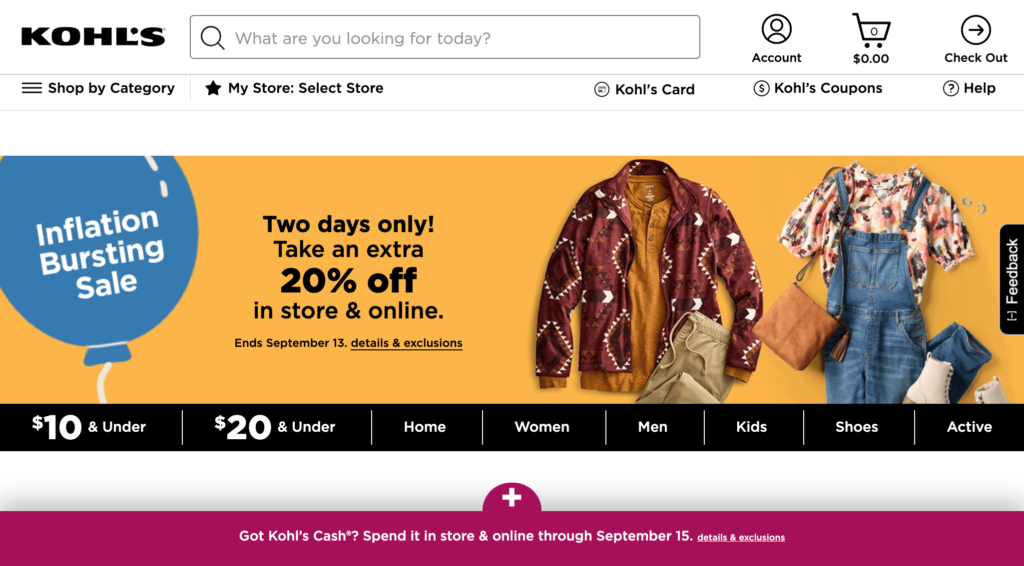 Source: Kohl’s
Source: Kohl’s
While this tactic can be costly in terms of storage space, integrating old inventory with new assortments and selling it at the most relevant time can be highly beneficial. It provides an opportunity for other products to get sold in the short term. At the same time, promoting the others with the right seasonal merchandise mix can increase the chances of being purchased later on.
3. Create Different Product Groups for Different Types of Shoppers
To successfully sell surplus stock, it’s important to not use a blanket approach for promoting them. Shoppers are individuals, with unique product preferences and motivations for making a purchase. More than half of them[*] want to feel heard, appreciated, and valued.
Here are several ways you can build product collections mixed with surplus inventory that attract your shoppers’ attention:
- Inspiration-Based. Contextualize your surplus products and inspire shoppers to buy. You can create collections according to style, body shape, trends, colors, and more. En Route has a “Shop by Aesthetic”, in its navigation based on the common styles it knows its shoppers are looking for.
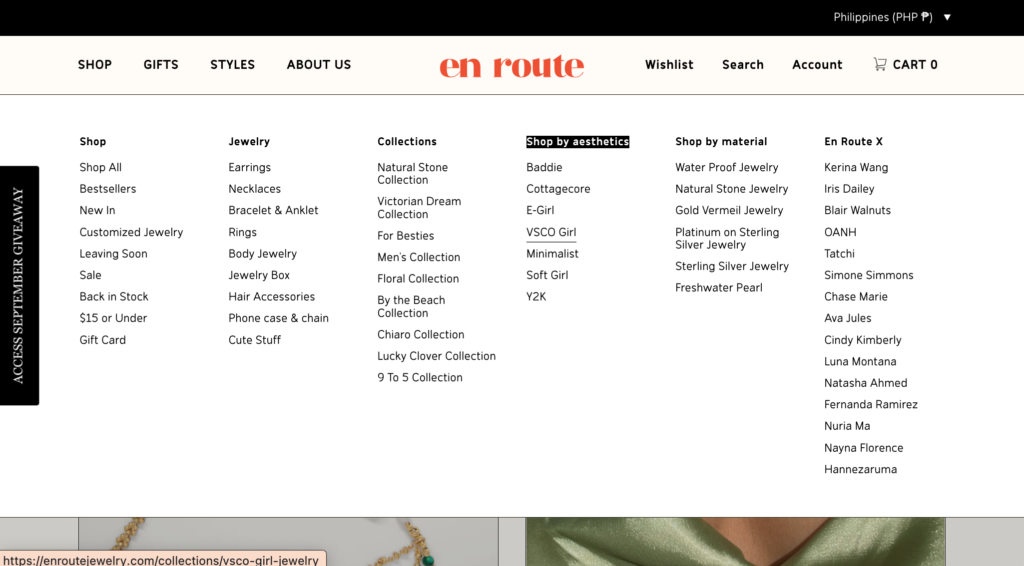 Source: En Route
Source: En Route
- Price-Based. As shoppers tighten their purse strings, it’s crucial to communicate price changes as much as possible to catch their interest. This way, they’re only going to explore inventory that they know they can afford, giving them opportunities to buy while also saving their time. H.Samuel is a great example.
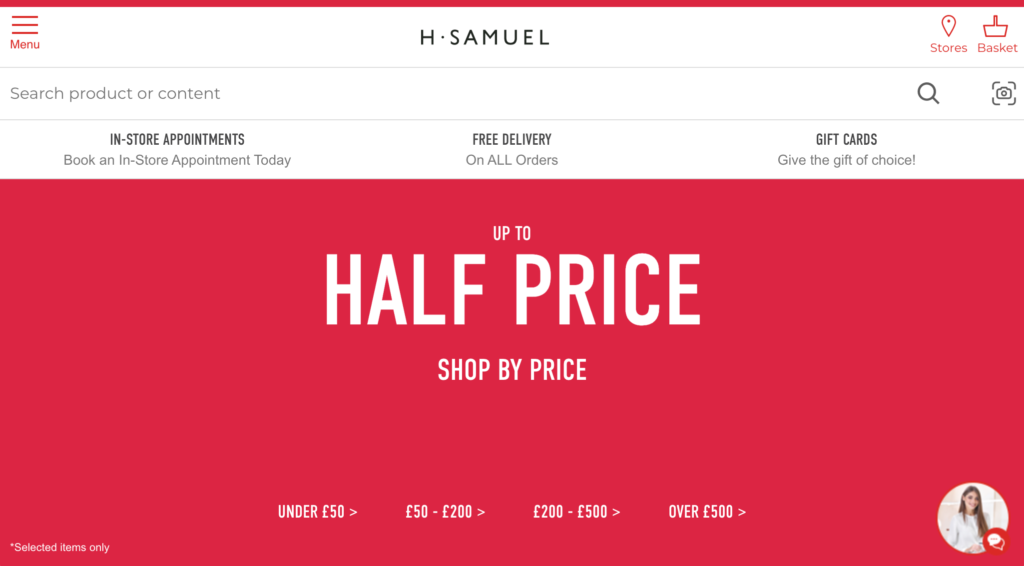 Source: H.Samuel
Source: H.Samuel
- Social Proof-Based. From customer reviews to product ratings, user-generated content is one of the few ways that can easily make your brand and products relatable to shoppers. Featuring real people flaunting your items can motivate shoppers to explore more. Musinsa not only has UGC on its homepage but also adds a layer of style inspiration from the streets of Seoul.
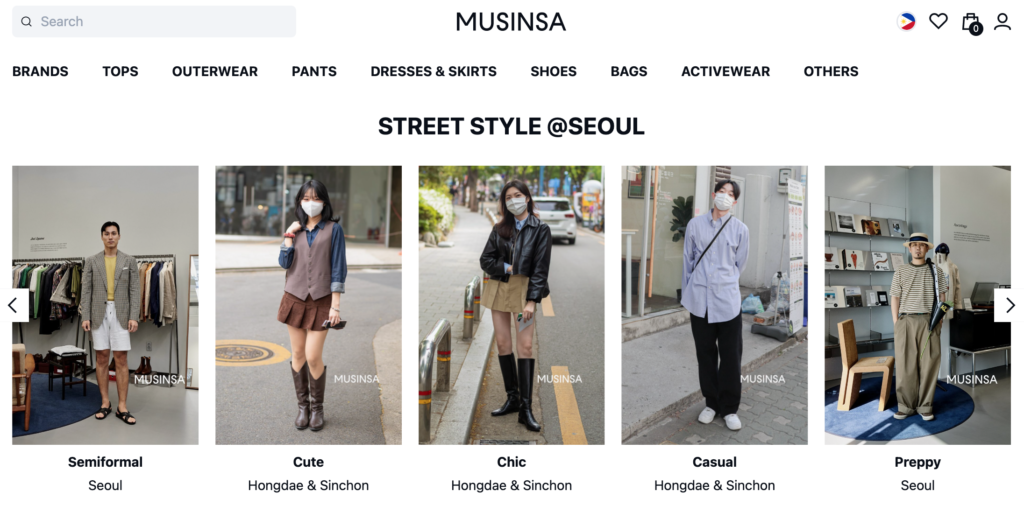 Source: Musinsa
Source: Musinsa
4. Speak to Your Customers’ Motivations and Desires
Encouraging shoppers to explore your inventory can be taken a step further with deeper personalization. This means taking your customers’ shopping behavior into account and adjusting the on-site experience accordingly. When done right, it can pay off. Shoppers are 40% more likely to spend more than planned when they notice that the shopping experience is highly personalized.[*]
Decathlon, for instance, has a “Just for You” collection that constantly gets updated based on new browsing data. As it says, “The more you browse, the better the recommendations.” Other brands implement the same tactic as recommendation carousels.
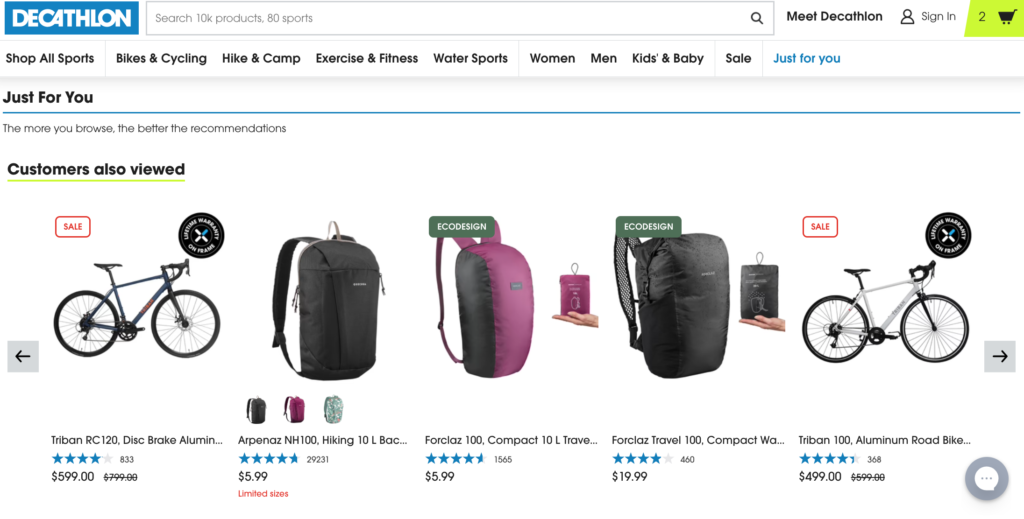 Source: Decathlon
Source: Decathlon
5. Make the Most Out of Large Shopping Events and Popular Holidays
Annual shopping events like BFCM are great opportunities to unload excess inventory and seasonal stock. Consumers have high purchase intent during this time, shopping both for themselves and loved ones. But BFCM, or the Thanksgiving weekend, is not the only major holiday you can participate in. According to the NRF[*], top US consumer spending events also include Back-to-College, Back-to-School, Mother’s Day, and Easter.
To make the most out of shopping holidays and seasonal sales, it’s best to modify your on-site experience to cater to shoppers of various occasions. Fashion Nova has a special page for Halloween, which in 2021, has a $102.74 average spend per person.
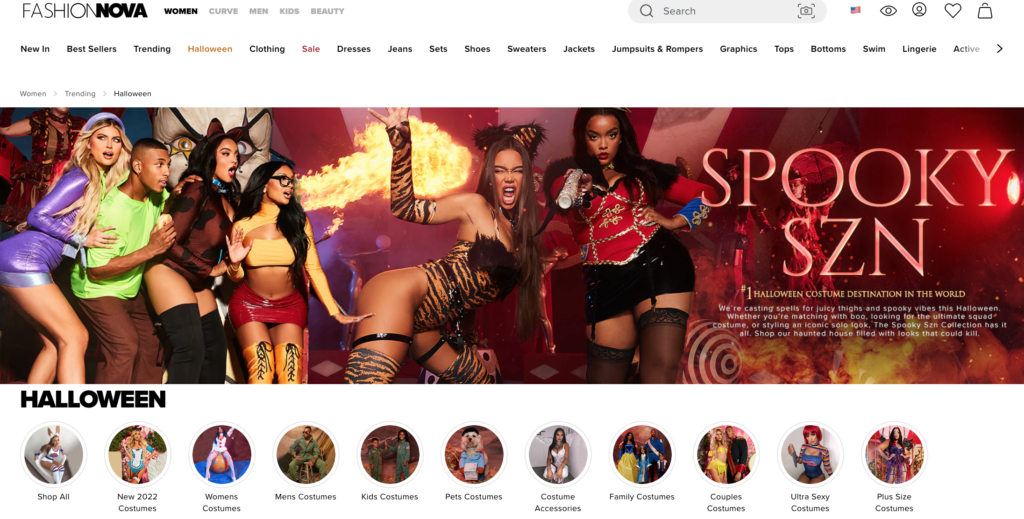 Source: Fashion Nova
Source: Fashion Nova
6. Create Engaging Content to Promote Surplus Products
Collaborating with influencers or content creators who have highly engaged communities can introduce your brand to a whole new audience. Shoppers not only discover new products and brands through them, but 37% of them[*] also trust social media influencers over brands.
To make sure your partnership with online content creators is a success, the key is to work with someone that best represents your brand. This is a win-win situation; your collaboration feels authentic to a new audience, boosting organic engagement and prompting them to check out more of your products.
Pro tip: Short videos are all the rage right now. TikTok, Instagram Reels, and YouTube Shorts are what social media giants are putting in front of users. So, make sure to create the relevant content accordingly. Neiwai does the same.
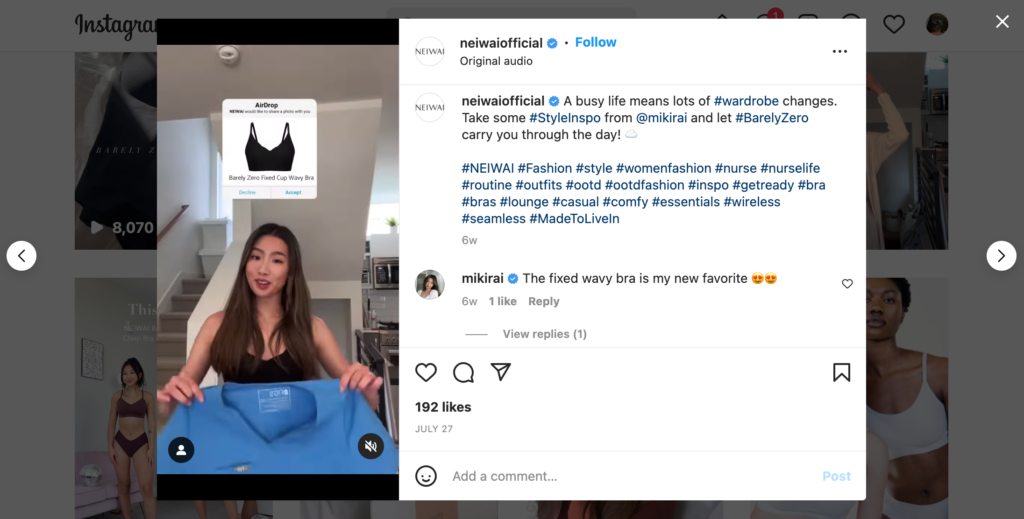
Source: Neiwai
7. Combine a Sense of Urgency with Irresistible Offers
To motivate shoppers to make a purchase fast, it’s strategic to pair your excess inventory with promotions that they find difficult to resist. Free shipping[*] is one, with at least 88% of consumers preferring it over fast shipping. Another way to get shoppers to spend is by adding a sense of urgency. Think limited-time discounts, exclusive sale access, hourly drops, and surprise sales. For example, Jared clearly states that its offer has a time limit to get shoppers moving and buying.
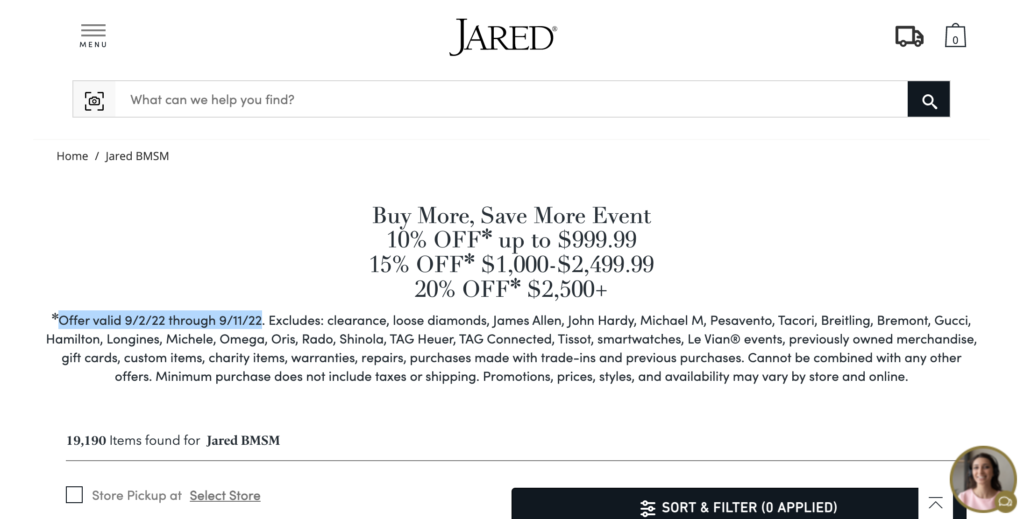
Source: Jared
8. Maximize Product Visibility
For 88% of shoppers, product selection/variety is important[*] when deciding which brand or retailer to buy from. So, make sure your shoppers can see your surplus stock, especially if it’s relevant to what they’re looking for. In addition to in-line banners and pop-ups on the homepage and product listing page, as well as eye-catching sections in your navigation, here are other ways to increase the visibility of your overstock inventory:
- Shop Similar Products and Looks. Allow customers to see other similar-looking products. You’re promoting the excess stock, and at the same time, engaging them with more options that reflect their preferences. City Furniture recommends other items that have the same aesthetic as the ones shoppers are browsing.
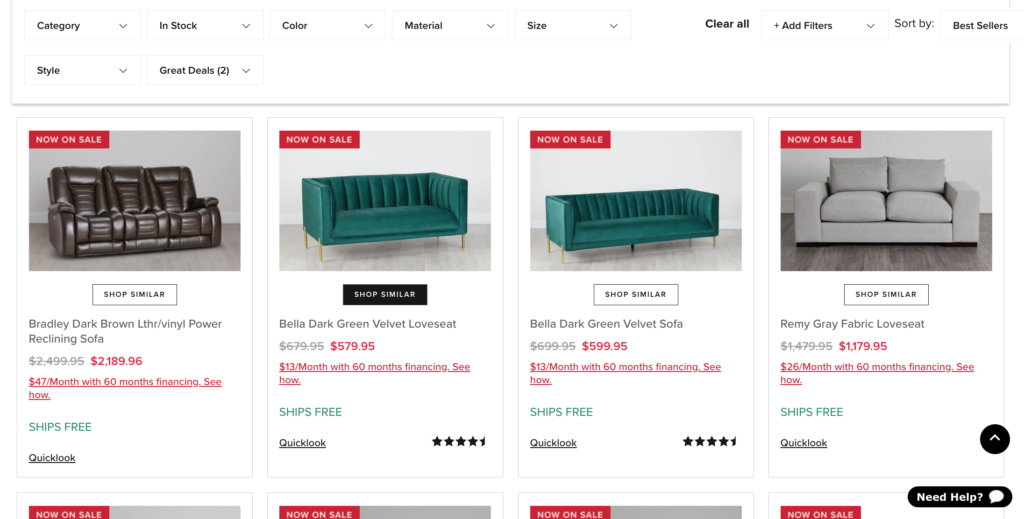 Source: City Furniture
Source: City Furniture
- Complete the Look. Surface more of your products in a less intrusive way by showing them in context. For example, customers looking at jeans can explore complementary items such as shoes and shirts that complete the whole look. Check out Adidas’ product detail page, with its “Complete the Look” carousel and the “Get matching items” carousel on the sidebar.
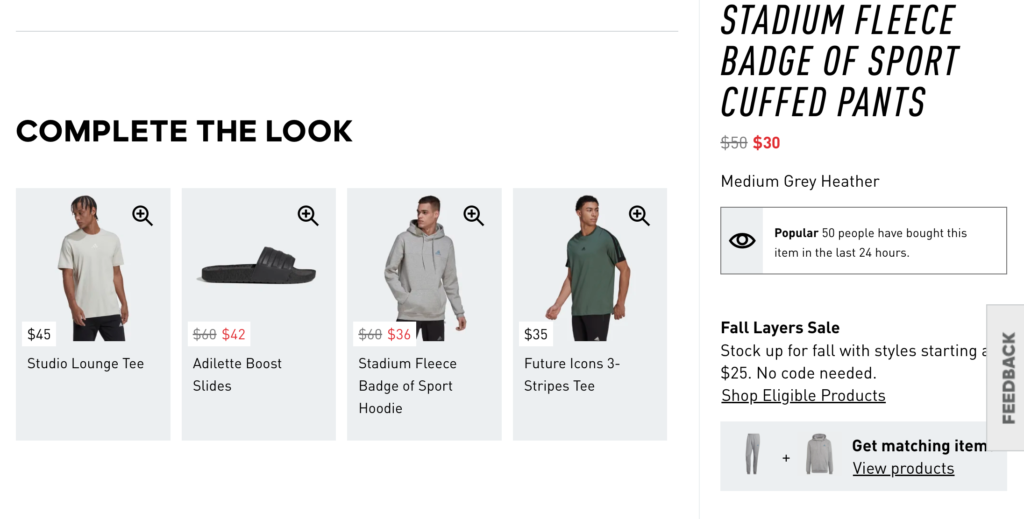 Source: Adidas
Source: Adidas
- Faceted Search. Make it easy for shoppers to look through your overstock inventory, especially when you have hundreds, if not thousands, of on-sale items. For instance, on Beaverbrooks, you can filter items according to price, which is helpful for budget-conscious shoppers. You can add more nuance to how shoppers explore product results with faceted search. Also known as guided navigation, it adds more specific and descriptive filtering options to your search results page. Usually, facets change depending on the category of products your shoppers are viewing. With faceted search, not only will your customers find what they came for, but they will also learn more about your product catalog.
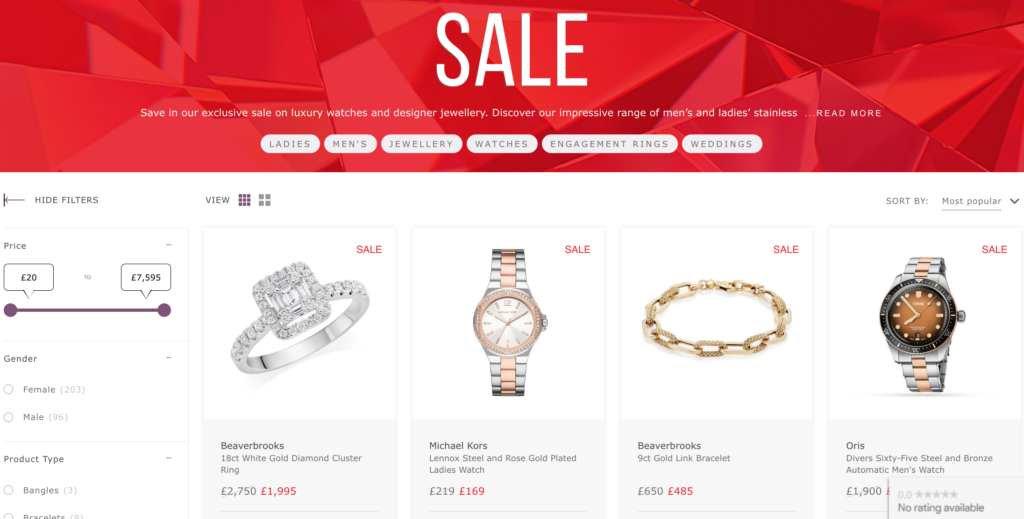 Source: Beaverbrooks
Source: Beaverbrooks
9. Re-Engage Shoppers that Showed Interest in Your Products
Do you have many shoppers exploring your surplus inventory and adding some of them to cart but not purchasing? With an average cart abandonment rate[*] of 69.99%, it’s a big challenge that must be addressed fast, especially with the added issue of overstock inventory.
Remarketing across channels, including email, SMS, and even in-app and push notifications can bring shoppers back to your site and right on to checkout. Moreover, if you have a wishlists feature on your site, you can promote items from there to further entice shoppers. But, the icing on the cake is pairing these remarketing efforts with the right promo. By offering the most appropriate, promo based on intent to individual shoppers, the more likely they are to act on it. Plus, you’re also maximizing resources and not wasting money on generic discounts.
De Beers allows shoppers to not only save items to their wishlists, but also share their picks with anyone. This type of information that directly tells you what consumers want is useful in crafting campaigns that resonate best with them.
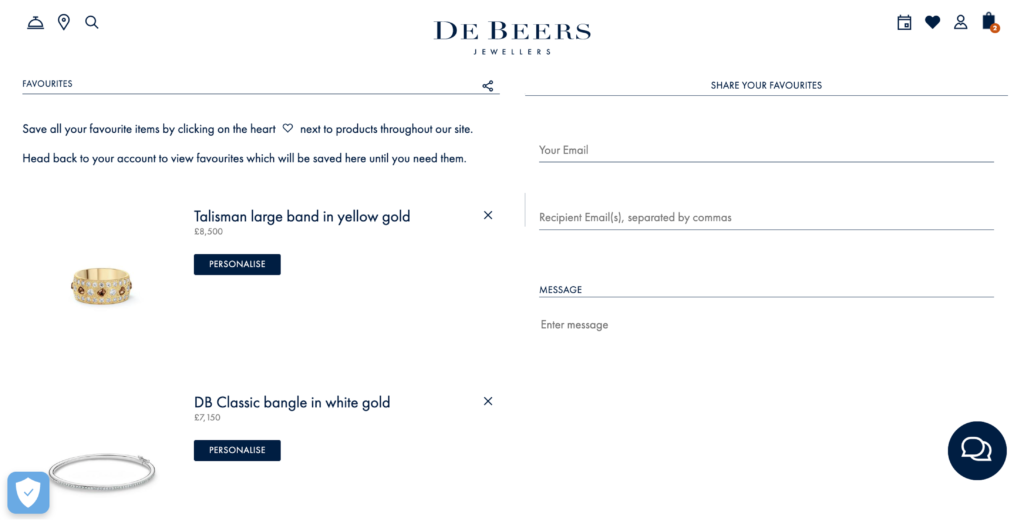 Source: De Beers
Source: De Beers
10. Create a Convenient and Compelling Customer Journey
With consumers leading busy lives, delivering smooth customer journeys that have them gliding from search to purchase is an advantage now more than ever. For 83% of consumers[*], convenience is important while shopping, particularly for those who shop primarily online. Over half of digital shoppers say convenience is significantly more essential now.
There are many ways to deliver convenience that eventually lead to the purchase of excess stock, from ensuring seamless product discovery to allowing guest checkout like what Oak + Fort offers. Eventually, customer journeys that address the expectations of your shoppers, be it convenience, personalization, or control, are what make the shopping experience worth coming back for.
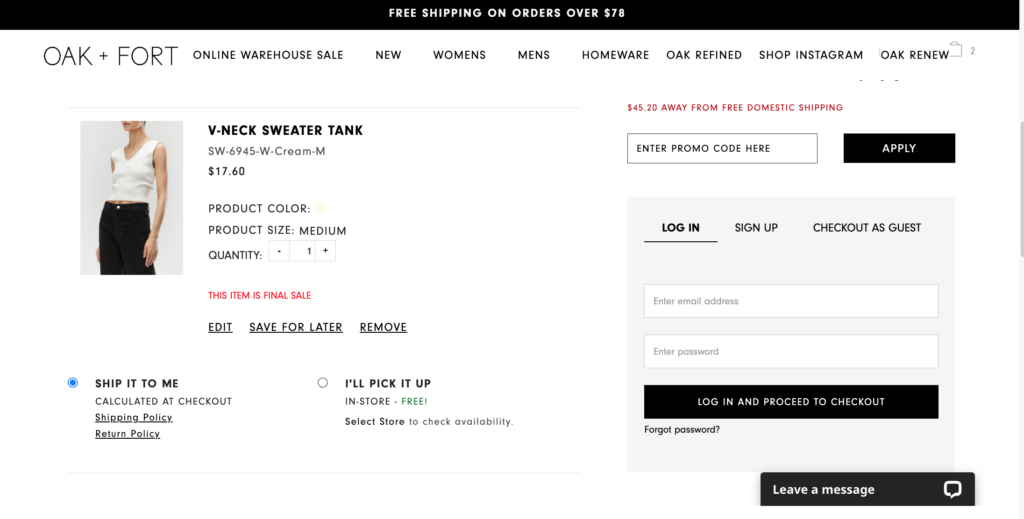 Source: Oak + Fort
Source: Oak + Fort
11. Make it Special: Give Away Surplus as Gifts
If products are hard to sell even with markdowns, especially those that have been in your inventory far too long, you can opt to turn overstock as free add-ons to customer purchases. Chubbies set up a fun way for shoppers to gain free gifts. Other ways to give your excess products for free include incentives for signing up with mailing lists and social media giveaways.
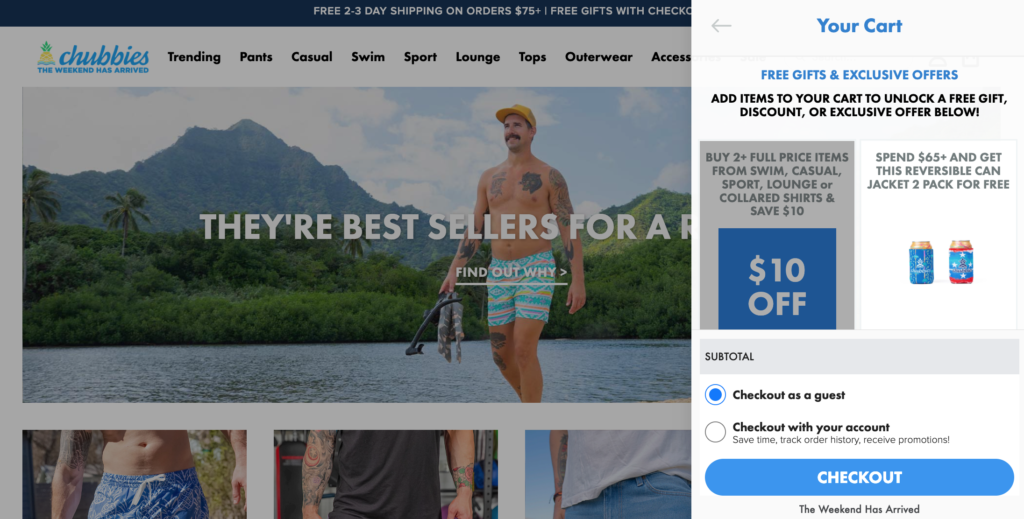 Source: Chubbies
Source: Chubbies
At face value, you won’t get any sales out of these initiatives, but the tactic not only frees up space in your warehouse but also delights customers. This can pay off in other ways; perhaps, in increasing brand awareness and perception since customers tell an average of nine people[*] about a positive brand experience.
12. Get Creative with Your Clearance Sales
Markdowns and clearance efforts, while effective at clearing inventory space, hurt retailers’ bottom lines. Nordstrom[*] estimates a $200 million loss in gross profits in the second half of the year because of deep discounts. With retailers having sales left and right, this promotion-heavy environment can also make discounts the norm for shoppers, which isn’t good in the long run.
To make deep discounts less detrimental, you can brand them and add more personality to the way you promote them. Lululemon, instead of a clearance sale, has “We Made Too Much.” In the same way, Monki’s on-sale items are called “Monki Archive.”
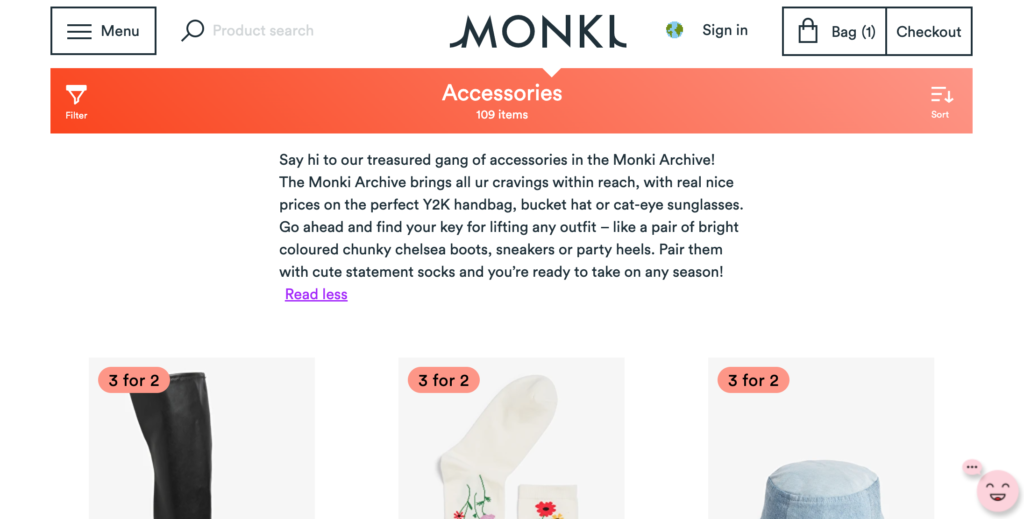 Source: Monki
Source: Monki
13. Make Visual Merchandising Extra Appealing
Another way of unloading surplus stock is to bundle it up with other complementary or high-value items. Customers love a good bargain. Four out of five US shoppers[*] say finding a great offer is on their minds throughout the entire purchase journey. By clearly stating the value that they’re getting out of the purchase, they’re more likely to buy.
Moreover, you can prevent further discount fatigue by experimenting with labels on your navigation or product listing page. For example, Tommy Hilfiger has, at least, three types of on-sale products. There’s the general “Sale,” then there’s also “New to Sale” and “Final Sale.” These labels provide a layer of distinction for shoppers, especially return visitors, creating a sense of newness even for discounted items.
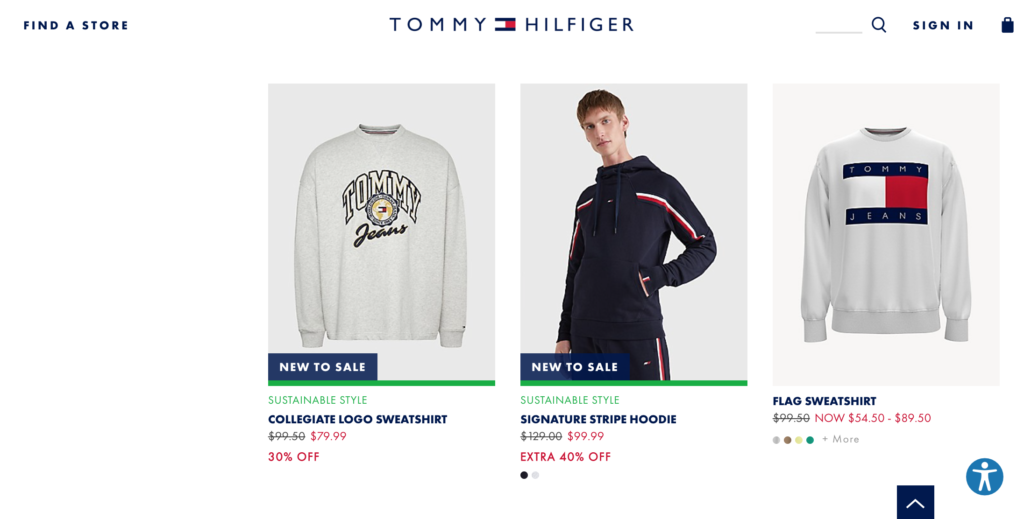 Source: Tommy Hilfiger
Source: Tommy Hilfiger
14. Communicate Product Exclusivity and Scarcity on Your Site
With tight spending, it’s expected that consumers are going to be holding on to their hard-earned money until they find the best deal. As they do this, many brands and retailers are competing for their attention. Moreover, over 50% of consumers are distracted while shopping online, doing other tasks that can derail them from their shopping journeys.
That’s why it’s important to understand when consumers are already in a buying state of mind. Once they’re giving the screen their undivided attention, you can encourage impulse purchases by focusing both campaigns and the on-site experience on scarcity and exclusivity. You can add countdowns and time-based popups. On its product pages, Michael Kors has eye-catching descriptions on top of the images that communicate the real-time popularity and demand of products.
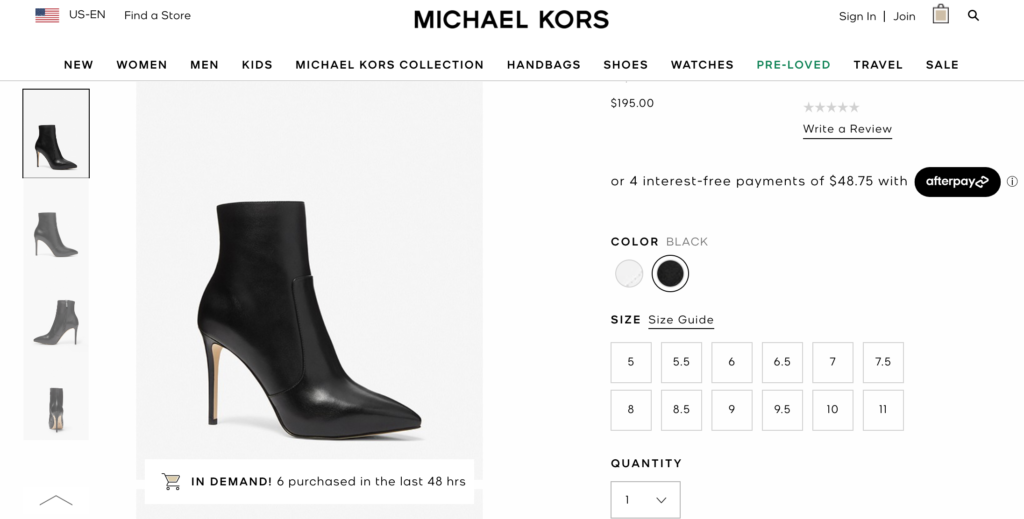 Source: Michael Kors
Source: Michael Kors
15. Promote the Purchase of Gift Cards
While deep discounts are a great solution at this moment, it’s also beneficial to prepare ahead. BFCM is when shoppers not only buy discounted items for themselves, but also gifts for others, and about 76% of them prefer to buy gift cards[*]. Excess inventory may stay a bit longer in your warehouse, but gift cards offer the potential for it to get sold in the future. You can boost gift card purchases by adding more flare to them, like how Urban Outfitters sells its gift cards. To ensure that shoppers won’t forget about using them, you can make gift card information easily accessible on your site. Urban Outfitters has a visible FAQ section and page where shoppers can check their gift card balance.
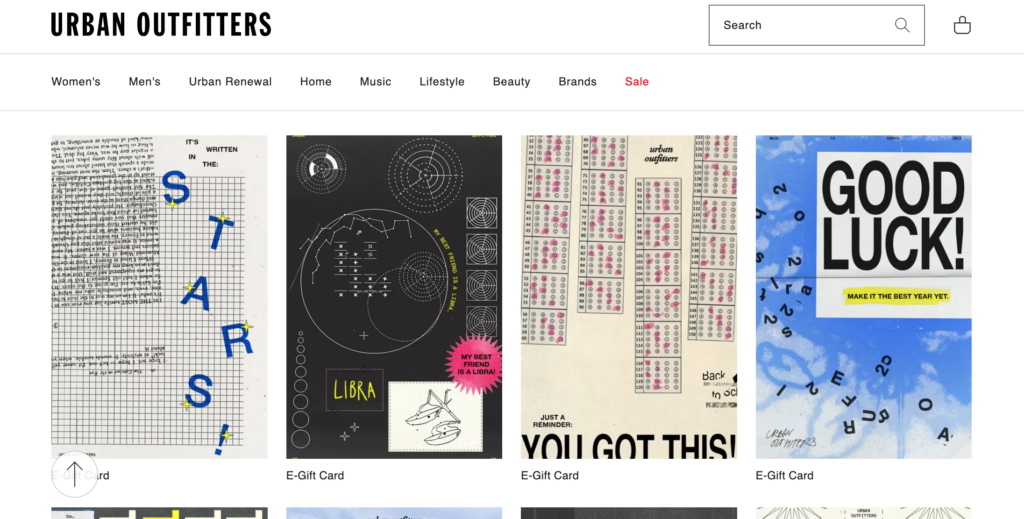 Source: Urban Outfitters
Source: Urban Outfitters
16. Donate Old Inventory
It’s the last resort, but donating might be your best option for items that are difficult to sell. In addition to clearing up inventory resources, donating can improve your brand image, especially if you choose a highly relevant charity or organization that resonates with your brand and shoppers.
With at least 66% of shoppers considering sustainability[*] when making a purchase, you’re not only giving back to the community, but also advocating for the environment instead of resorting to waste. How do you go about this? Take inspiration from a social good brand, Bombas.
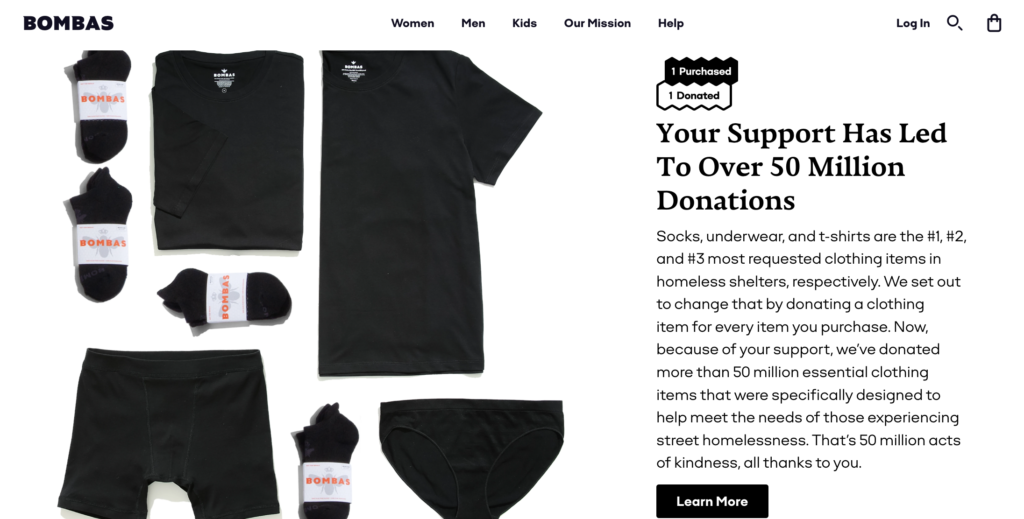 Source: Bombas
Source: Bombas
Time to Eliminate Excess Inventory
Making the most out of overstock inventory is the reality for many brands and retailers today. As the market continues to be in a state of flux, consumer habits are going to be changing in a way that makes it hard to accurately predict demand and manage the supply chain.
As outlined here, make sure you have the data and end-to-end visibility into the whole of your inventory as the foundation, before diving into the rest of the tactics. Because at the end of the day, the brands and retailers who thrive in a time of uncertainty or downturn are those able to drive data-driven decisions, creatively stay agile, and keep in tune with what customers want and need.




